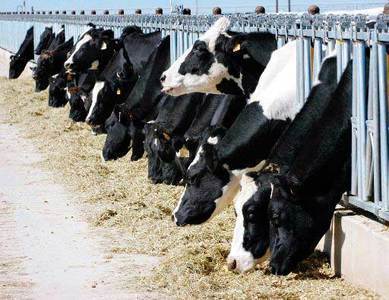Horrific side effects that are generally unrecognized by medical practitioners, that’s what these medications have in common. Gardasil Week just ended on Hormones Matter. It made me realize how many bad drugs are on the market. I had an adverse reaction to a fluoroquinolone antibiotic, Cipro, and my life changed forever. Reading the Gardasil stories, I noticed similarities amongst the adverse reactions of the fluoroquinolone antibiotics, Cipro, Levaquin and Avelox and the adverse reactions to Gardasil; both are massive, system-wide and go generally unnoticed by modern medicine.
I have to admit, I’m a bit scared about writing this post. I don’t want to be labeled as “anti-vaccine” and demonized as such. I’m not anti-vaccine. Vaccines have saved thousands of lives throughout human history. Even though an antibiotic hurt me, I’m not anti-antibiotic either. Like vaccines, antibiotics have saved thousands, possibly millions of lives. Vaccines and antibiotics together account for so much good in modern medicine that it has become almost sacrilegious to question or criticize them – as if in questioning them one negates the lives that have been saved by them.
Rogue Players
Unfortunately, some rogue players have entered both the vaccine and the antibiotic fields; Gardasil in the vaccine market and the fluoroquinolone antibiotics, Cipro, Levaquin and Avelox, in the antibiotic market. Whether the benefits outweigh the risks of these drugs and/or whether these drugs are being used properly is a question that should be asked. Unfortunately, questioning a vaccine or antibiotic leads many to a knee-jerk reaction. Often the injured individual is accused of being anti-vax or anti-antibiotic. It is as if even asking whether or not these drugs are being properly applied and the risk are being properly assessed, is offensive; as if, in acknowledging that there are side-effects that may not outweigh the benefits for these particular drugs, you are trying to annihilate the whole class of treatments.
I’m not, in any way shape or form, proposing that we get rid of either vaccines or antibiotics. But it would be more than nice, it would be the right, just, empathetic, loving thing to do, to listen to the stories of those who have been hurt by Gardasil or fluoroquinolones, and to explore whether or not they are the right tools to use for accomplishing what we want to accomplish – the limiting of disease and infection. Sticking one’s head in the sand and insisting that all things that come out of the pharmaceutical industry are good and pro-science is a faith-based position that is, frankly, incorrect.
People are being hurt by both Gardasil and fluoroquinolne antibiotics. Disabling, ruinous effects are coming from both of these drugs. Their lives go from normal, with nothing wrong with them in the case of those being treated by Gardasil, or having possibly only a minor infection, in the case of those prescribed fluoroquinolones, to a life of suffering with chronic health problems. This isn’t right. It’s not okay. There is nothing that is okay about turning a non-existent condition into a chronic miserable condition, or an acute condition that can be cured with mild antibiotics, and turning it into a chronic syndrome that causes pain and suffering for years to come.
Too Severe to be Real?
Reactions to both Gardasil and fluoroquinolones are often delayed, weeks to months, and so severe that they are, ironically, disregarded as absurd or impossible. If hundreds or even thousands people didn’t have similar reactions, this might be a valid argument, but when a lot of people have the same reaction of body-wide breakdown, the connection between the drug and the reaction should be seen as valid and researched as such.

Maybe the incredulous attitude people display when faced with a severe adverse reaction to a pharmaceutical stems from our preconceptions about what medicines should do or how they should act. Although, we are all aware of the risk for side-effects, we believe they “should” be mild and treatable. When, in fact, some patients develop severe reactions that are systemic, complex and difficult or impossible to treat. Rather than connecting the system-wide breakdown that the patient experiences to the drug, it is easier to believe that the cause of the person’s problems were something else, or dismiss the patient with a misdiagnosis. Rarely are the illnesses linked to the medications that caused them. When the adverse reactions are so comprehensive, they’re seen as absurd and unlikely. Worse yet, they are considered impossible to treat and often dismissed. Even if a physician recognizes the connection between the medication or vaccine and the system-wide breakdown that develops, there is very little, if anything, he or she can do to treat the syndromes that arise.
But They Save Lives
“But they save lives!” is always the argument that people make in favor of these drugs. For fluoroquinolones, OF COURSE they save lives! No one is arguing that they don’t. But given the severity of the adverse effects caused by fluoroquinolones, their use should be reserved for life or death situations. Unfortunately, fluoroquinolones are used as a first line of defense against urinary tract infections, sinus infections, suspected prostate infections, travelers’ diarrhea, etc., when other, safer drugs are available and are equally effective. Giving people a drug with the potential for severe negative consequences when there are effective alternatives that don’t have the same risks is a violation of the Hippocratic Oath.
Of course, if everyone reacted as badly as I did to Cipro, or as badly as Alexis, Ashley or Nicole did to Gardasil, these drugs would be taken off the market. Everyone would know that they are dangerous and no one would take them (except, in the case of fluoroquinolones like Cipro, in a truly life-or-death situation where there were no other alternatives). But the fact that not everyone has a horrific adverse reaction to these drugs does not negate the fact that some people do. (And more people have bad reactions to these drugs than realize it. Because of the delay in adverse reactions, the fact that they are under-recognized by doctors and thus an incorrect diagnosis is often made, and the absurdity of the reactions being caused by an antibiotic or vaccine, people often fail to make the connection between the cause, fluoroquinolones or Gardasil, and the reaction, a chronic syndrome of pain and destruction.)
Regardless of whether or not policy change comes as a result of the harm caused by Gardasil or fluoroquinolones, the victims of both deserve sympathy and compassion. They deserve to be able to tell their stories. They deserve to be listened to. I can only hope that the stories are heard.
Postscript. Read more about Greg Spooner’s toxic reaction to Cipro, here.
Information about Fluoroquinolone Toxicity
Information about the author, and adverse reactions to fluoroquinolone antibiotics (Cipro/ciprofloxacin, Levaquin/levofloxacin, Avelox/moxifloxacin and Floxin/ofloxacin) can be found on Lisa Bloomquist’s site, www.floxiehope.com.
Participate in Research
Hormones MatterTM is conducting research on the side effects and adverse events associated with Gardasil and its counterpart Cervarix. If you or your daughter has had either HPV vaccine, please take this important survey. The Gardasil Cervarix HPV Vaccine Survey.
To take one of our other Real Women. Real Data.TM surveys, click here.
To sign up for our newsletter and receive weekly updates on the latest research news, click here.















